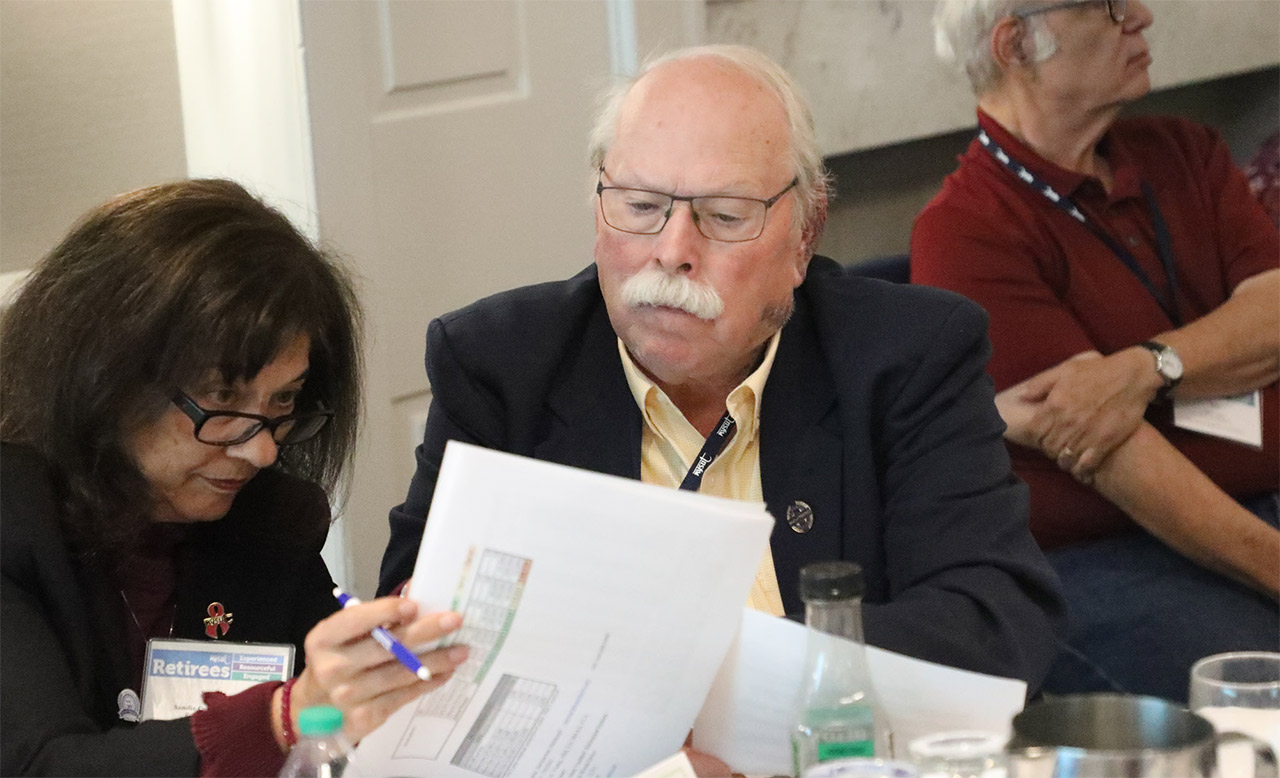Retirees sound the alarm on tier inequities, pledge to help fix Tier 6

id you know that under the current provisions of Tier 6, a 55-year-old member with 30 years of service would take home a pension less than half of what members in Tiers 1–4 receive?
After attending a retirement workshop at the Plattsburgh Regional Office, Rod Sherman, RC 9, found that hard to believe. “The numbers didn’t make sense to me,” said Sherman, a retired Plattsburgh High School math teacher and former Plattsburgh Teachers Association president for 39 years. He questioned whether the discrepancy could be that great and decided to run the numbers.
Using a fictitious 55-year-old retiree with 30 years of service and a Final Average Salary of $88,687 at the end of the 2021–2022 school year, Sherman calculated the pension benefit for each tier. As a Tier 1–5 member they qualified for 60 percent of their FAS; 55 percent as a Tier 6 member. As a Tier 1–4 member, Sherman’s retiree received an annual unreduced pension of $53,212.
The benefit dropped sharply for Tier 5 or 6.
Under Tier 5, Sherman’s retiree only qualified for 37 percent of their FAS, or $32,816, due to a two-year early retirement penalty. The full retirement age under Tier 5 is 57. The news was even worse as a Tier 6 member. Smacked with an eight-year early retirement penalty, since the full retirement age under Tier 6 rises to 63, his retiree only qualified for 26.4 percent of their FAS, or an annual pension of $23,413.
“Trading a $53,212 pension for a $23,413 pension has a huge impact on someone’s standard of living,” said Sherman, who called the tier discrepancies wrong and unfair. “This is not a system that any teacher can afford to have a decent retirement on. These tiers are killing our profession.”
Seeing the disparity in black and white inspired Sherman to rally his fellow retiree leaders behind NYSUT efforts to fix Tier 6 this legislative session.
“I presented my findings at this year’s retiree contiguous meeting and the response was unanimous — every leader pledged to help,” he said, noting that many in-service educators don’t understand the value of a pension since retirement is decades down the road for them. “It’s our job as retirees to step in and help. We need to sound the alarm so they understand the importance of pensions, and we can help them get this fixed.”
“Retirees love the profession and they want it to be as rewarding for new teachers as it was for them,” said NYSUT Second Vice President Ron Gross, noting that reduced retirement benefits are a major problem. “Tier 6 is one more thing discouraging people from entering, or staying in, the teaching profession.”
NYSUT is committed to fixing the problem, said Gross. “Last year, thanks to NYSUT lobbying, we reduced vesting from 10 to five years for Tiers 5 and 6. And back in 2000 we successfully capped Tier 4 member contributions at 10 years, ending career-long payments for educators,” Gross continued. He noted that one important way retirees and in-service members can help fight for tier equity is by contributing to VOTE-COPE, the union’s voluntary political action fund, which helps the union advocate for member concerns at the state legislative level. No NYSUT dues dollars are used to support political activities.
“We know how to get this done — we’ve been successful before and we’re making tier improvements a priority in the 2023 legislative session,” Gross said.